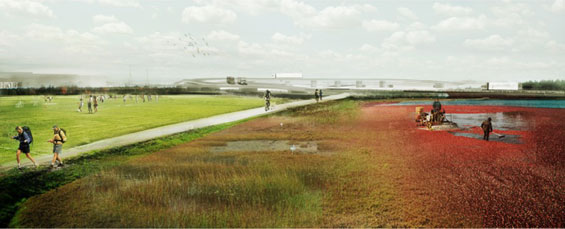
New Jersey’s rapid urban development has shifted land use patterns from forestlands and agriculture to suburbs, diminishing the State’s vast river network and compromising the quality of its primary residential water source. This project demonstrates the redistribution of land use patterns with respect to hydrological systems, and utilizes the New Jersey Turnpike ROW as an opportunity to re-conceive and deploy binary relationships between built and hydrological systems as an urban and hydrological gradient.
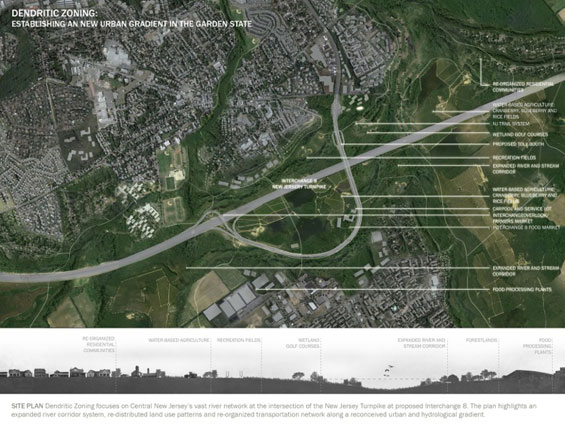
Dendritic Zoning demonstrates the redistribution of land use patterns and transportation networks with respect to hydrological systems situated within a suburban environment, and re-conceives existing binary relationships between the built environment and hydrological systems (common in suburban environments) as a hydrological and urban gradient. Rather than a fixed 300’ buffer along streams and river networks, land uses are re-zoned per hydrological adaptability. Concurrently, this project utilizes the New Jersey Turnpike ROW (and its current expansion due to lane widening projects in Central New Jersey) as an area of opportunity to deploy the redistribution of land use patterns. Specifically, the design intervention focuses on newly proposed Interchange 8 as an ecological node, with site specific agriculture (e.g. water-based agriculture: cranberry, blueberry and rice fields), redistributed golf and recreation fields along expanded stream corridors, and multi-modal infrastructure supporting Interchange car, bike and pedestrian trails.
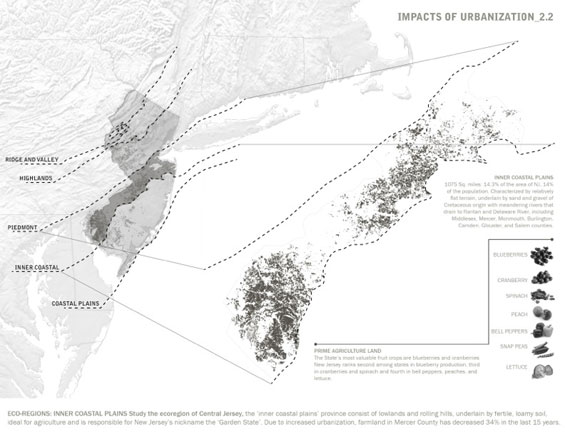
In a larger context, this project aims to promote the re-evaluation of current land-use planning models with respect to regional ecologies and provides ways in which to evaluate regional landscapes and develop local landscape strategies. Extending beyond planning strategies, this project also repositions transportation networks as the platform for a multi-modal network that reacts to local landscapes. No longer linear, transportation networks become ecological frameworks—generating new urban ecologies, morphologies and multiple nodes of mobilities that support contemporary urban life.
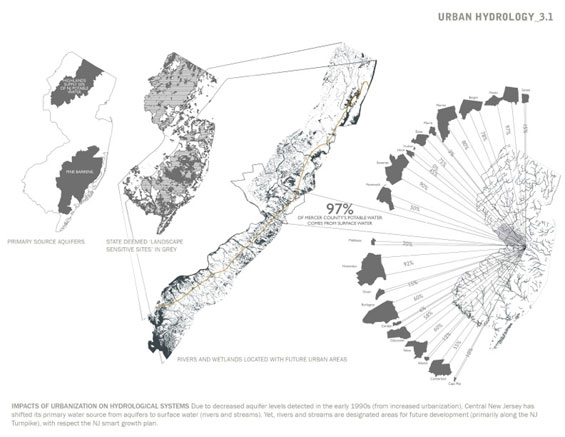
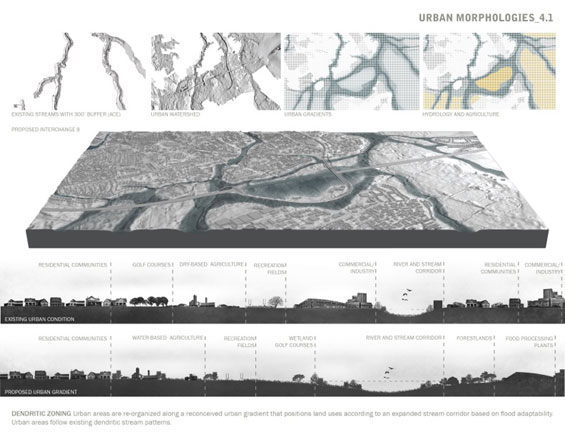
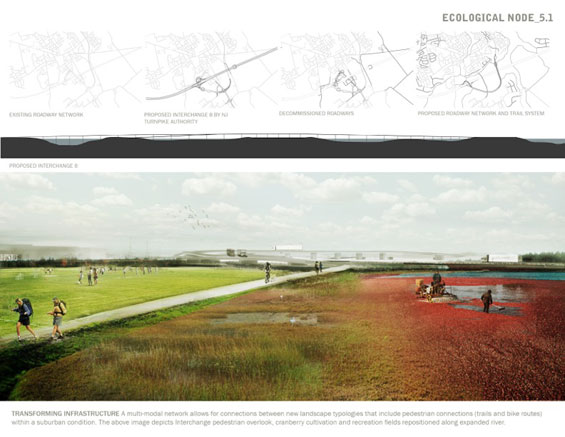
IMAGE & TEXT CREDIT | ATLAS lab: Kimberly Garza



Comments are closed.